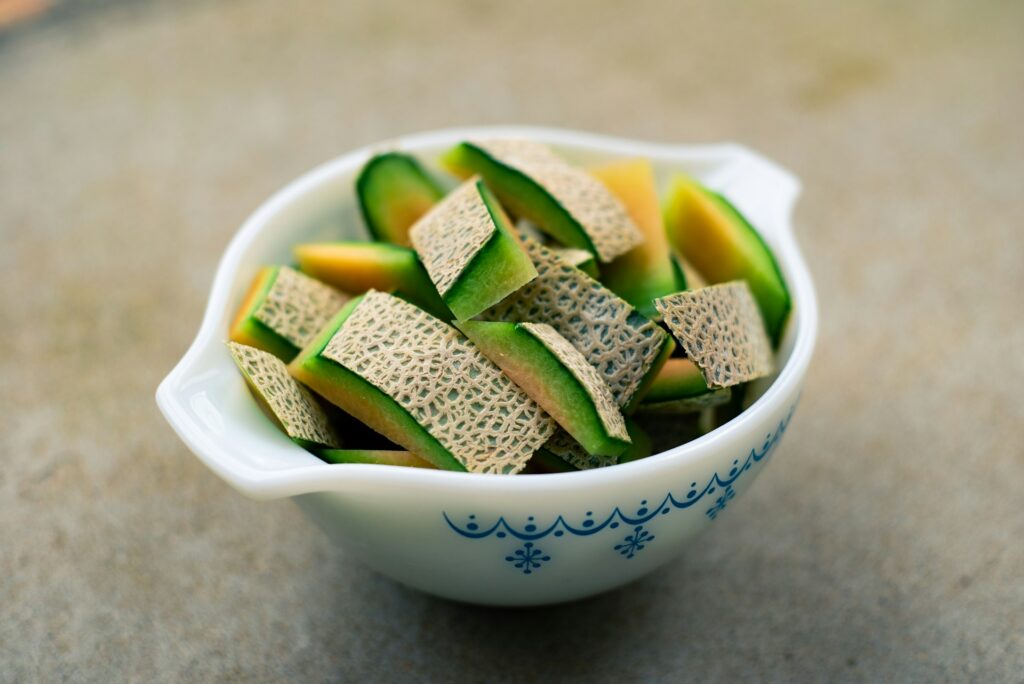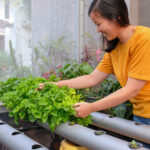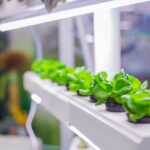Cantaloupe, also known as muskmelon, is a delicious and nutritious fruit that can be a rewarding addition to your garden. With its sweet, juicy flesh, cantaloupe is a favorite in summer salads, smoothies, and desserts.
Growing cantaloupe requires some specific conditions and care, but with the right approach, you can enjoy a bountiful harvest. Here’s a step-by-step guide to help you grow cantaloupe successfully.
Choosing the Right Variety
Before planting, choose the cantaloupe variety that best suits your climate and preferences. Popular varieties include:
Ambrosia: Known for its sweet flavor and resistance to powdery mildew.
Hale’s Best Jumbo: A classic variety with excellent flavor and texture.
Minnesota Midget: Ideal for shorter growing seasons, this variety produces small, sweet fruits.
Preparing the Soil
Cantaloupe thrives in well-drained, sandy loam soil with a pH between 6.0 and 6.8. Here’s how to prepare your soil:
Testing: Test the soil pH and adjust if necessary using lime to raise pH or sulfur to lower it.
Amending: Incorporate plenty of organic matter, such as compost or well-rotted manure, to improve soil fertility and drainage.
Tilling: Till the soil to a depth of 8-12 inches to ensure it is loose and aerated.
Planting
Cantaloupe needs warm soil and plenty of sunlight to grow. Follow these steps for successful planting:
Timing: Plant cantaloupe seeds or transplants after the last frost date when the soil temperature is at least 70°F (21°C).
Spacing: Space plants 36-48 inches apart in rows that are 5-6 feet apart to allow ample room for the vines to spread.
Depth: Plant seeds 1 inch deep. If using transplants, plant them at the same depth they were growing in the pots.
Watering
Proper watering is crucial for healthy cantaloupe growth:
Consistency: Keep the soil consistently moist but not waterlogged. Overhead watering can promote diseases, so drip irrigation or soaker hoses are ideal.
Deep Watering: Water deeply once a week, providing about 1-2 inches of water. During hot, dry spells, you may need to water more frequently.
Mulching and Weeding
Mulching helps retain soil moisture and control weeds:
Mulch Material: Use organic mulches like straw, grass clippings, or black plastic mulch to conserve moisture and reduce weed growth.
Weeding: Regularly remove weeds to prevent competition for nutrients and water. Be careful not to disturb the shallow roots of the cantaloupe plants.
Fertilizing
Cantaloupe benefits from regular feeding:
Initial Feeding: At planting time, mix a balanced fertilizer (e.g., 10-10-10) into the soil.
Side Dressing: Once the vines begin to spread, side-dress with a nitrogen-rich fertilizer to encourage vigorous growth. Reduce nitrogen as fruits develop to focus on fruit production.
Pollination
Cantaloupe requires pollination to set fruit:
Bees: Encourage pollinators like bees by planting flowers nearby and avoiding the use of pesticides during flowering.
Hand Pollination: If natural pollination is insufficient, you can hand-pollinate by transferring pollen from male to female flowers using a small brush.
Pest and Disease Management
Keep an eye out for common pests and diseases:
Pests: Aphids, cucumber beetles, and squash bugs can damage cantaloupe plants. Use insecticidal soap or neem oil as needed.
Diseases: Watch for powdery mildew, downy mildew, and bacterial wilt. Ensure good air circulation, avoid overhead watering, and rotate crops to minimize disease risk.
Harvesting
Knowing when to harvest cantaloupe is key to enjoying its best flavor:
Ripeness Indicators: The fruit is ready to harvest when it easily detaches from the vine with a gentle tug, the skin turns a golden color, and it emits a sweet fragrance.
Timing: Harvest in the morning when the temperatures are cooler to preserve fruit quality.
Storage
Proper storage ensures you enjoy your cantaloupe for as long as possible:
Refrigeration: Store harvested cantaloupe in the refrigerator. Whole melons can last up to a week, while cut pieces should be consumed within a few days.
Freezing: For longer storage, you can freeze cantaloupe. Cut into cubes, spread on a baking sheet to freeze individually, then transfer to airtight containers or freezer bags.
By following these steps, you can successfully grow cantaloupe in your garden and enjoy the sweet rewards of your labor.
Common Growing Problems and Solutions
Growing cantaloupe can sometimes present challenges. Here are some common issues and how to address them:
Poor Fruit Set: This can occur due to insufficient pollination or extreme weather conditions. Ensure plenty of pollinators are present and consider hand pollination if necessary. Protect plants from extreme heat or cold with row covers.
Blossom End Rot: This condition causes the ends of the fruits to rot and is often due to calcium deficiency or inconsistent watering. Maintain consistent soil moisture and add calcium to the soil if needed.
Fungal Diseases: Powdery mildew and downy mildew are common fungal diseases. Use resistant varieties, provide good air circulation, and apply fungicides if necessary.
Vine Decline: This can be caused by various soil-borne diseases. Rotate crops regularly and avoid planting cantaloupe in the same spot more than once every three years.
Extending the Growing Season
In regions with shorter growing seasons, you can take steps to extend the growing period for cantaloupe:
Starting Indoors: Start seeds indoors 3-4 weeks before the last frost date and transplant seedlings when the weather warms.
Using Row Covers: Protect young plants from cold nights and extend the growing season by using row covers or cloches.
Choosing Early Varieties: Select cantaloupe varieties that mature quickly, such as ‘Minnesota Midget’ or ‘EarliChamp’.
Companion Planting
Certain plants can enhance the growth and flavor of cantaloupe when grown nearby:
Good Companions: Radishes, beans, corn, and marigolds can help repel pests and improve soil conditions.
Bad Companions: Avoid planting cantaloupe near potatoes or other melons, as they can compete for nutrients and attract similar pests and diseases.
Enjoying Your Harvest
Once you’ve harvested your cantaloupe, there are countless ways to enjoy it:
Fresh: Eat cantaloupe fresh, either on its own or in fruit salads. Its sweet, juicy flavor pairs well with other summer fruits.
Smoothies: Blend cantaloupe with yogurt, honey, and a splash of orange juice for a refreshing smoothie.
Desserts: Incorporate cantaloupe into desserts like sorbets, tarts, or fruit popsicles.
Savory Dishes: Use cantaloupe in savory dishes, such as cantaloupe and prosciutto appetizers or a refreshing cantaloupe salsa.
Saving Seeds
If you want to grow cantaloupe again next year, saving seeds from your best fruits is a cost-effective and rewarding practice:
Selecting Fruit: Choose healthy, mature fruits from strong, productive plants.
Extracting Seeds: Scoop out the seeds, rinse them to remove any flesh, and spread them out to dry on a paper towel.
Storing Seeds: Once fully dry, store the seeds in a cool, dry place in a labeled envelope or jar. They can remain viable for several years if stored properly.
Final Tips for Success
Here are some additional tips to ensure a successful cantaloupe harvest:
Rotate Crops: Rotate your cantaloupe crops each year to prevent soil-borne diseases.
Monitor Weather: Keep an eye on weather forecasts and protect your plants from unexpected frosts or heatwaves.
Practice Patience: Cantaloupe plants take time to mature and produce fruit. Be patient and provide consistent care for the best results.
Growing cantaloupe can be a gratifying experience, providing you with delicious fruits to enjoy throughout the summer. With careful planning, attention to detail, and a bit of patience, you can cultivate a thriving cantaloupe garden that yields sweet, juicy rewards.






